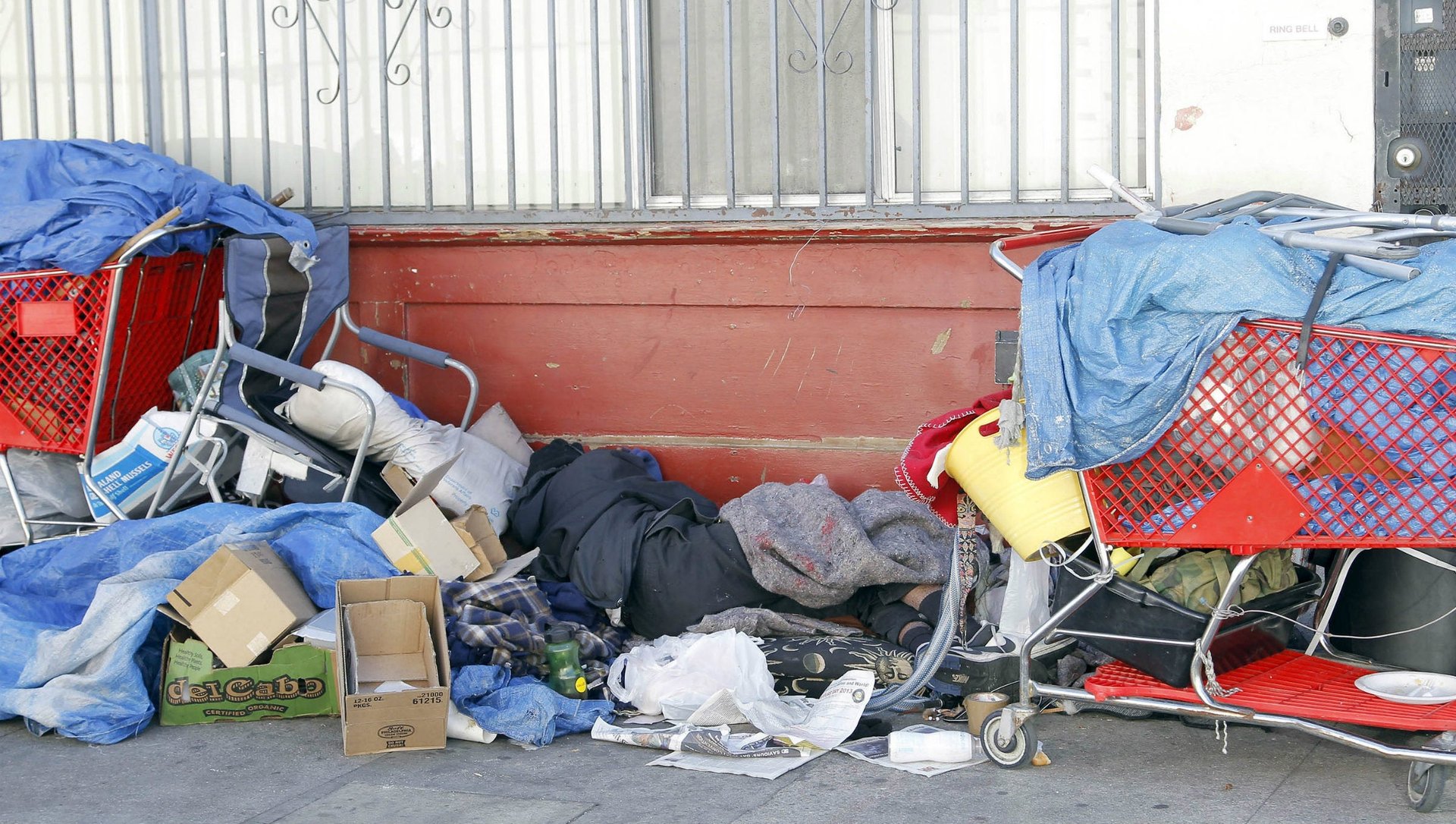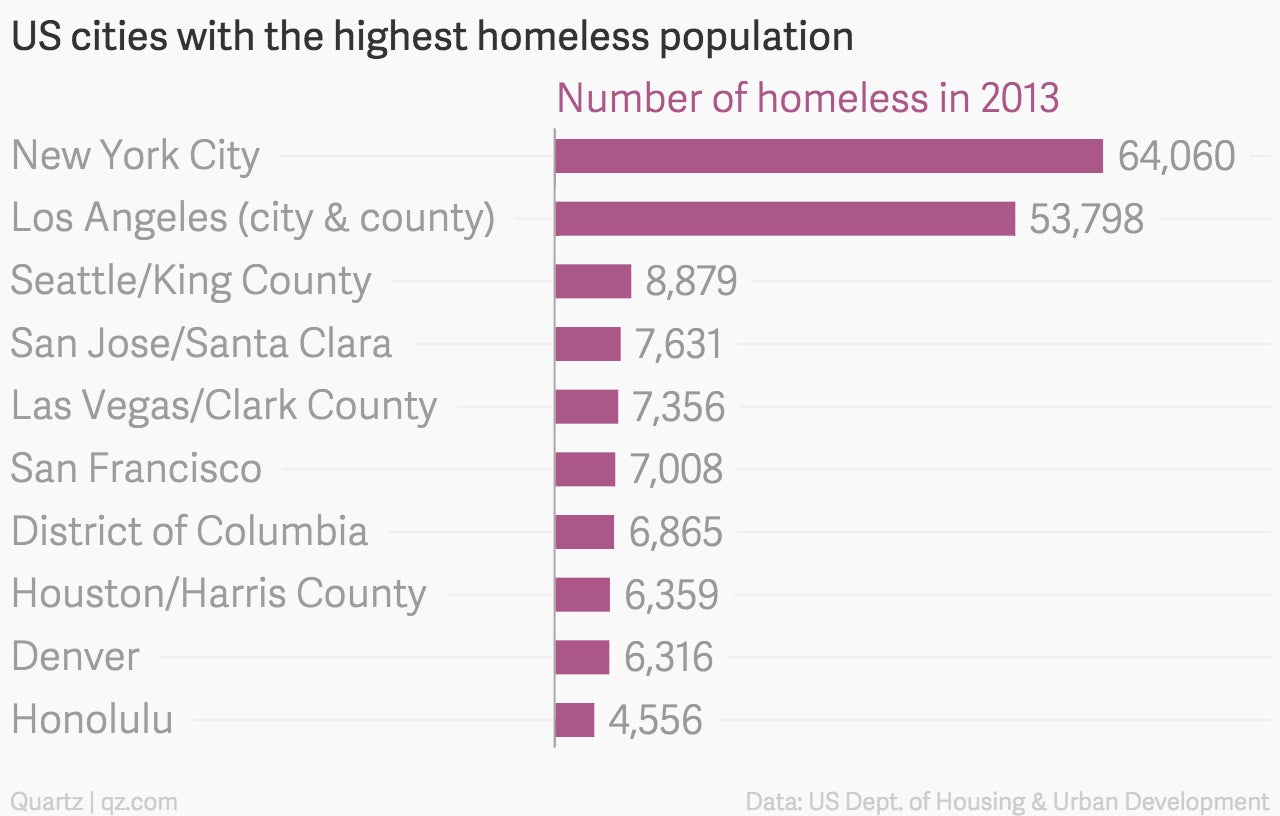A fatal police shooting shows how the “Safer Cities” initiative in Los Angeles failed Skid Row
The fatal police shooting yesterday of a man living in the Skid Row neighborhood of Los Angeles shines a harsh light on the downtown neighborhood that contains the highest concentration of homeless people in the US, and a controversial city program that was supposed to clean the area up.


The fatal police shooting yesterday of a man living in the Skid Row neighborhood of Los Angeles shines a harsh light on the downtown neighborhood that contains the highest concentration of homeless people in the US, and a controversial city program that was supposed to clean the area up.
Skid Row has a long history of homelessness. The area has attracted “hobos, aimless rail riders, transient workers, and people running away from past lives” since the 1880s, as charity Union Rescue Mission explains. A 1975 city policy that moved most social services for the homeless to the area made it a permanent destination for some of these people.
The officers involved in the shooting were part of a city government plan called the “Safer Cities Initiative,” first introduced under former police chief William Bratton in 2006. The initiative added 50 police to the area, tasked with the “broken windows“ approach to policing, which holds that harsh punishments for small offenses stop more serious crimes from being committed.
Indeed, violent crime and robberies dropped significantly in Skid Row after the initiative was introduced. But critics say the initiative has been devastating for people living on the streets, because it stresses criminalization for minor law infractions over social services, essentially making it a crime to be homeless. And the area’s homeless population has surged in recent years, thanks to a weak economy.
A 2010 survey of homeless and poor people in the Skid Row area found that over half had been arrested in the past year because of the initiative, resulting in loss of housing, social services, and jobs. Nearly half said they had been physically or verbally abused by police while receiving citations for non-violent behavior like jaywalking, drinking in public, and sleeping on the sidewalk.
The latest report from the US Department of Housing and Urban Development (HUD) puts the Los Angeles homeless population just behind New York City’s:

But the Weingart Center for the Homeless estimated in 2011 that Los Angeles’s homeless population was much higher, at 82,000 people on any given night and nearly 75,000 year-round and California’s overall homeless population has just increased since then. About one-quarter of LA’s homeless are mentally ill, the center said, and 18% are military veterans.
The city has one of the highest percentage rates of unsheltered homeless people in the US at 82%, the HUD report says (pg. 20). What the homeless are allowed to put on sidewalks and in other public spaces is the subject of several court cases.
A lack of shelter and the sidewalk rules may have played a role in the Feb. 27 shooting—the victim had been asked several times by police to take down the tent he was in, one witness told the Los Angeles Times. Los Angeles’s homeless are allowed to sleep in public areas between 9pm and 6am.
What, exactly, happened in the police shooting is still being investigated. There will be plenty of evidence—in addition to the eyewitness-shot video that’s now been viewed by nearly 4 million people, police patrolling the Skid Row area are participating in a pilot program to increase transparency, and at least one officer involved was wearing a body camera.